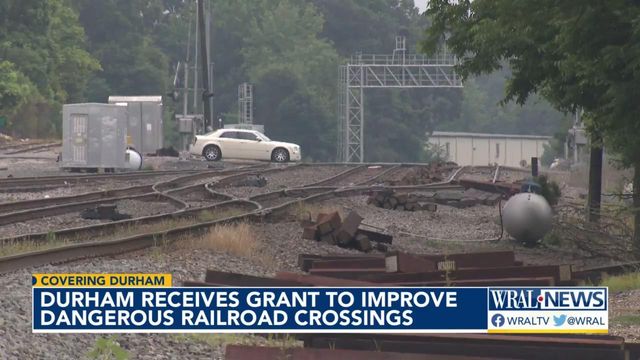Durham County to study how to improve train crossings, ease traffic jams
Train tracks at street level throughout downtown Durham create problems that range from traffic snarls to deadly crashes.
Posted — UpdatedNow, the county is using a $1.2 million grant from the U.S. Department of Transportation to study solutions for three problematic crossings, at Plum, Driver and Ellis streets in the eastern part of the city.
"The solutions will either mean creating a bridge over them, tunneling under them or possibly closing some," said Wendy Jacobs, vice chair of the Durham County Board of Commissioners.
"This is the way that we are going to be able to create a regional rail system is by addressing each of the barriers," Jacobs said.
One report shows that at Ellis Road "traffic backed up ... for approximately 1/2 mile, including police and paramedics."
Rosemarie Baker was halfway across the tracks on Wednesday when a train approached.
"I almost had a little panic attack crossing the road," she said. "I'm really concerned. This area is growing, and this has happened several times."
"This is the way that we are going to be able to create a regional rail system is by addressing each of the barriers, each of the pieces of the project, and going after the federal funding," Jacobs said. "This is exactly how we're going to make it happen."
Durham County and GoTriangle will also contribute about $250,000 to the study, on top of the federal dollars.
• Credits
Copyright 2024 by Capitol Broadcasting Company. All rights reserved. This material may not be published, broadcast, rewritten or redistributed.






